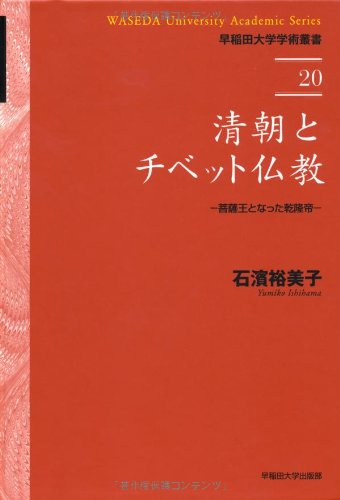5 0 0 0 OA マンネルヘイムのアジア旅行関連資料とそれに基づくチベット仏教徒の動向について
- 著者
- 石濱 裕美子
- 出版者
- 内陸アジア史学会
- 雑誌
- 内陸アジア史研究 (ISSN:09118993)
- 巻号頁・発行日
- vol.31, pp.145-163, 2016-03-31 (Released:2017-05-26)
Carl Gustaf Mannerheim (1867-1951) travelled across Asia from Bukhara to Beijing from 1907 to 1908 to collect military intelligence for Russia. The diary he kept during this journey provides much information about Tibetan Buddhists under the influence of the Qing dynasty, namely Kalmuk, Torgut, Sirayogur, and Tangut, and contains a report of interviews with Torgut Khan's mother and with the exiled thirteenth Dalai Lama at Wu-taishan. Based on this information, this article clarifies that many Russian Tibetan Buddhists freely travelled to Tibet and Amdo and built relationships with Tibetan Buddhists in these regions. It also provides an outline of the photographs taken by Mannerheim during his journey and the antiquities of Tibetan Buddhism currently in the possession of the Finnish National Board of Antiquities.
3 0 0 0 雍正期の皇室外交の二面性--果親王のチベット奉使旅行
- 著者
- 石濱 裕美子
- 出版者
- 内陸アジア史学会
- 雑誌
- 内陸アジア史研究 (ISSN:09118993)
- 巻号頁・発行日
- no.20, pp.83-92, 2005-03
3 0 0 0 OA <書評> 平野聰著『清帝國とチベット問題』
- 著者
- 石濱 裕美子
- 出版者
- 東洋史研究会
- 雑誌
- 東洋史研究 (ISSN:03869059)
- 巻号頁・発行日
- vol.64, no.2, pp.400-407, 2005-09
2 0 0 0 OA ダライラマ13世の著作に見る自称表現と政体表現の変遷について
- 著者
- 石濱 裕美子
- 出版者
- 早稲田大学大学院教育学研究科
- 雑誌
- 早稲田大学大学院教育学研究科紀要 (ISSN:13402226)
- 巻号頁・発行日
- vol.24, pp.1-18, 2014-03-07
2 0 0 0 チベット中世教会史の解明-聖ツォンカパ伝の研究-
本研究はチベット仏教の大成者ツォンカパ・ロサンタクペーペル(1357-1419)の最古層の伝記の研究を通じて、ゲルク派の歴史・教会史を明らかにすることを目的とした。現在入手可能なツォンカパの最も古い伝記には、『自伝』、直弟子のケドゥプジェ(1385-1438)の一般的な伝記『信仰入門』と神秘体験を綴ったンカ『秘密の伝記』、それに対する補遺として書かれたジャンペルギャムツォ(1356-1428)の『ツォンカパ伝補遺』他2篇がある。本研究課題では、これらの伝記の和訳研究を通じて、文献学、歴史学、仏教学の視点からツォンカパの思想形成や当時の教団の具体的な姿などを明らかにした。これらの伝記の成立順も確定することができた。まず最初に『自伝』が書かれて、ツォンカパの学習過程が修学期間、思想形成期間、講説期間という三つの期間に分けるパターンが確立した。ケドゥプジェの『信仰入門』が書かれ、次に同じく『秘密の伝記』が書かれ、それらを踏まえて『ツォンカパ伝補遺』が書かれた。その大部分はツォンカパ在世時に書かれたが、ツォンカパの死後『信仰入門』の最後にその様子が付け加えられたと推定される。また、ツォンカパの著作の全てのコロフォンを整理した。そこには、著作年次はほとんど見られないが、著作場所が記されていることが多く、また『信仰入門』にはツォンカパの場所の移動が細かく記されているので、それらを対照することで、多くの著作の著作年次または著作順序を明らかにすることができた。本研究課題の成果として、報告書において『自伝』、『秘密の伝記』、『補遺』の訳注と『信仰入門』の梗概を収録した。『信仰入門』全体の訳注は後日、その他の資料も含めて刊行予定である。
- 著者
- 石濱 裕美子
- 出版者
- 早稲田大学大学院教育学研究科
- 雑誌
- 早稲田大学大学院教育学研究科紀要 (ISSN:13402226)
- 巻号頁・発行日
- no.29, pp.33-46, 2019-03-05
1 0 0 0 OA 攝政サンゲ・ギャンツォの著作に見る一七世紀チベットの王權論
- 著者
- 石濱 裕美子
- 出版者
- 東洋史研究會
- 雑誌
- 東洋史研究 (ISSN:03869059)
- 巻号頁・発行日
- vol.51, no.2, pp.230-250, 1992-09-30
The fifth Dalai Lama entrusted his own royal authority to the Regent Sangs in 1679. However, since the regent was a layperson and the Dalai Lama a priest, there are many unclear points concerning the nature of royal authority in this period. This paper examines the nature of royal authority in this period through Regent Sangs's conception of it, with special reference to his portraitas Manjusri, to his history of incarnation, and to his claim to be Cakravartin raja. This article concludes that Regent Sangs's theory of incarnation was in nature the same as the Dalai Lama's, that both were understood to be the Buddha in their original nature regardless of the distinction between priest and laity. Lay rulers prior to the emergence of the Dalai Lama regime had presented genealogical records to explain their origins. However, although the Regent Sangs came to power like them from among the laity, he did not take his distinguished genealogy as the basis for his authority, but rather his claim to be a 'Buddha incarnate' instead. Thus it might be said that the nature of royal authority under the Dalai Lama regime was different from that of the pre-Dalai Lama period.
- 著者
- 石濱 裕美子
- 出版者
- 内陸アジア史学会
- 雑誌
- 内陸アジア史研究 (ISSN:09118993)
- 巻号頁・発行日
- vol.31, pp.145-163, 2016
<p>Carl Gustaf Mannerheim (1867-1951) travelled across Asia from Bukhara to Beijing from 1907 to 1908 to collect military intelligence for Russia. The diary he kept during this journey provides much information about Tibetan Buddhists under the influence of the Qing dynasty, namely Kalmuk, Torgut, Sirayogur, and Tangut, and contains a report of interviews with Torgut Khan's mother and with the exiled thirteenth Dalai Lama at Wu-taishan. Based on this information, this article clarifies that many Russian Tibetan Buddhists freely travelled to Tibet and Amdo and built relationships with Tibetan Buddhists in these regions. It also provides an outline of the photographs taken by Mannerheim during his journey and the antiquities of Tibetan Buddhism currently in the possession of the Finnish National Board of Antiquities.</p>
- 著者
- 石濱 裕美子
- 出版者
- 早稲田大学文学部東洋史学専修室
- 雑誌
- 史滴 (ISSN:02854643)
- 巻号頁・発行日
- no.37, pp.106-82, 2015-12
1 0 0 0 OA 中国におけるチベット学の現状
1 0 0 0 清朝とチベット仏教 : 菩薩王となった乾隆帝
1 0 0 0 OA 妙應寺白塔の奉納品に見る乾隆帝のチベット仏教信仰 : 乾隆18年の白塔修復について
- 著者
- 石濱 裕美子
- 出版者
- 早稲田大学
- 雑誌
- 學術研究. 地理学・歴史学・社会科学編 (ISSN:09130179)
- 巻号頁・発行日
- vol.53, pp.A1-A11, 2005-02-25


